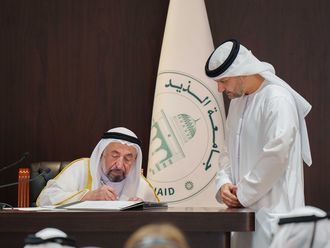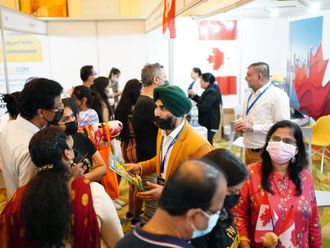Abu Dhabi: Two professors from UAE University have designed a new technology to help clear gasfields from toxic compounds with the potential payoff that will help save both energy costs and efficiency.
Operating gasfields currently contain high levels of gases such as carbon dioxide and hydrogen sulphide which requires intensive treatment methods to clear them, with the process often resulting in the use of large amounts of energy.
With this in mind, the two professors, Mohammad Al Marzouqi, and Sayed Marzouk, developed a system that manages to clear the gas compounds while using much less energy.
“We developed a new membrane-based technology to capture carbon dioxide from natural gas which currently is done — or at least mostly done — by what they call a sweetening unit … we use the same technology but instead of using large sweetening units, we use a small membrane-based treatment to provide an alternative compact technology making it ideal for offshore plants,” explained Al Marzouqi.
“Sweetening units use lots of energy — in fact most of the energy consumption is used for the regeneration of these solvents. Our technology — which relies on large number of small porous polymeric tubes — uses much less solvent, ultimately reducing the amount of energy needed in the regeneration part of the process,” he added.
Conditions
The project itself was 10 years in the making with a lot of research and lab work being done before the new technology was finally developed according to Al Marzouqi.
“In the lab, we developed conditions that were similar to what they have in the [gas] field — in terms of high temperatures and pressures. A lot of work went into making sure that we not only met the target using a different technology but that we were working in the same conditions,” he said.
“We tried to reduce the solvent usage because our target was not only to see if we could meet the target but to determine how much less solvent we could use. Based on this, we could calculate how much energy we could save,” he added.
As part of their research, the professors also managed to create a new type of device for measuring carbon dioxide and hydrogen sulphate, with the device for measuring carbon dioxide being patented by the Japan Patent Office, and the hydrogen sulphate device patented by the United States Patent Office.
“Currently, the available devices to measure carbon dioxide and hydrogen sulphate are very expensive … [so we created a] smaller, lighter and cheaper [device] to manufacture,” Al Marzouqi said.
“With this [new device], you can have an analyser based on a miniature sensor for a fraction of that budget. You just supply the gas stream and measure the concentration,” he said












